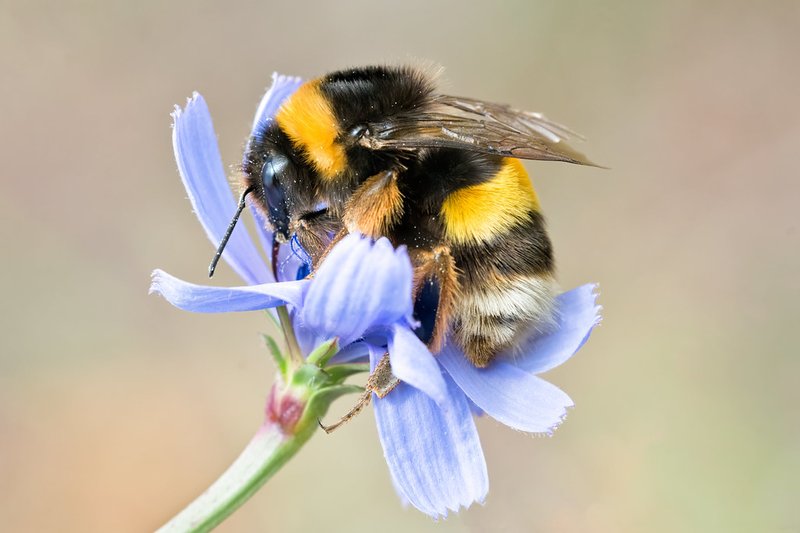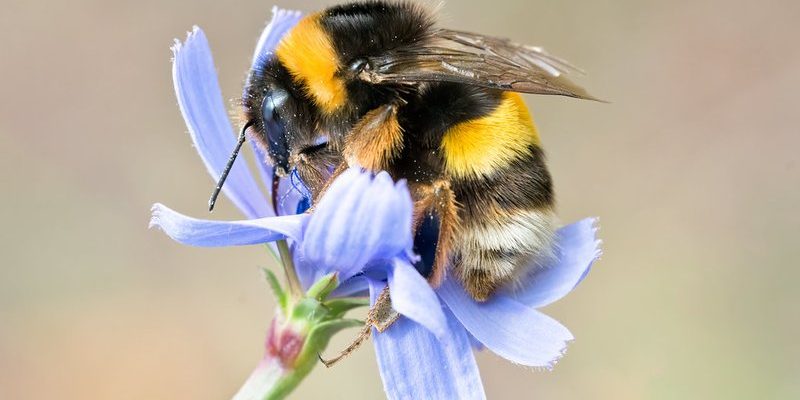
Just like humans rely on gestures, words, and expressions to communicate, bumblebees have their own unique ways of sharing information. Whether it’s finding food, alerting others to danger, or even deciding how to build their nests, communication is at the heart of their social structure. Let’s dive deeper into how these little pollinators connect with one another and interact in their vibrant communities.
The Buzz of Communication
Bumblebees primarily communicate through sound and movement. You might have noticed that when they fly, they produce a low-frequency buzz. This buzzing isn’t just background noise; it’s a form of communication. Bumblebees can modulate the frequency and intensity of their buzz to convey different messages. For instance, a loud, rapid buzz might signal excitement or urgency, while a softer buzz could indicate a more relaxed state.
But here’s the thing: it’s not all about sound. Bumblebees also use body language! Yes, these little creatures do communicate using dance-like movements. When a forager bee discovers a good source of nectar, she returns to the colony and performs a dance known as the waggle dance. This dance helps her teammates locate the food source by showing them the direction and distance to fly.
So, next time you see a bumblebee buzzing around, remember—it’s not just a busy little worker; it’s a master communicator!
Waggle Dance: The Art of Foraging
The waggle dance is one of the most incredible aspects of bumblebee communication. Imagine a bee moving in a figure-eight pattern while shaking her body. This movement isn’t random; it actively shares crucial information about food locations.
When performing the waggle dance, the bee points in the direction of the flower patch relative to the sun. The angle at which she waggles her body indicates the angle to fly. For example, if she waggles directly upwards, that means “go straight towards the sun.” The longer she waggles, the farther away the food source is. This method of communication allows other bees to efficiently find new food sources and contribute to the hive’s success.
However, it’s not just about finding food. This dance can also alert fellow bees to the presence of threats, helping them prepare for danger. It’s fascinating to see how communication can shape their behaviors and survival strategies.
Smells and Pheromones: Chemical Communications
While buzzing and dancing are critical, the world of bumblebees is also rich in chemical communication. Bumblebees use scents, specifically pheromones, to share information about their environment and colony status.
For instance, when a bee returns to the nest, she might release specific pheromones to signal her presence and let others know that she’s back. This helps to maintain colony cohesion, as bees can recognize each other through scent. If a bumblebee encounters a threat, she may release alarm pheromones, triggering other bees to prepare for defense.
Pheromones play a vital role in various aspects of a bumblebee’s life, such as mating. When a queen is ready to mate, she emits unique pheromones to attract male bees. This chemical form of communication is essential for reproduction and colony growth.
Social Structure and Roles
Bumblebee colonies are like well-organized communities, each member having a specific role. Understanding their social structure helps clarify how they interact. Generally, there are three main types of bumblebees in a colony: the queen, the workers, and the drones.
– Queen: The leader of the colony, responsible for laying eggs and ensuring the hive thrives.
– Workers: The industrious females who forage for food, care for the young, and maintain the nest.
– Drones: The male bees whose primary role is to mate with the queen.
This division of labor is crucial for the colony’s survival. Worker bees often communicate with the queen and each other to coordinate tasks. For instance, if a worker finds a great food source, she’ll buzz back to the hive, perform the waggle dance, and direct others to help.
Understanding these roles and how they communicate provides insight into the complex social life of bumblebees.
Challenges in Communication
Like any community, bumblebees face challenges in their communication. Environmental factors such as noise, weather conditions, and habitat loss can interfere with their buzzing and dancing. For example, if it’s windy, the sound of their buzz might not carry well, making it harder for bees to communicate effectively.
Moreover, human activity can disrupt their natural habitats, leading to fewer flowers and nesting sites. This scarcity affects their ability to forage and communicate efficiently. When bumblebees are distressed due to these factors, their pheromone signals may also change, impacting colony dynamics.
To help these vital pollinators, maintaining biodiversity and protecting their habitats is crucial. We can all contribute by planting bee-friendly flowers and reducing pesticide usage.
Understanding how bumblebees communicate and interact opens up a world of appreciation for these remarkable creatures. Their buzzing, dancing, and chemical signals work together to create a sophisticated network of information sharing. By studying these behaviors, we gain insights into the importance of cooperation and teamwork in nature.
As you watch bumblebees in your garden or at the park, remember: there’s a whole lot more happening beneath the surface. These tiny insects are not just buzzing around; they are engaging in a complex social dance that keeps their colonies thriving. So, let’s cherish and protect their environment, allowing their communication and interaction to flourish for years to come.

